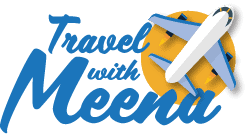As a traveler of color, I’ve never felt as welcome or as seen as I did in Zaandam.
It was almost as if I just blended in, so much so that everyone I encountered spoke to me in Dutch first. A few people asked where I was from but when I responded with Chicago, not a single person asked where I was really from.
Usually, between my accent and skin color, people are trying to figure out why I’m brown. I’ve lost track of the number of times people have complimented my English or asked why I looked foreign. In Zaandam, no one seemed to care.

Zaandam, a Dutch city of about 80,000 people about 15 minutes north of Amsterdam may be the most welcoming city I’ve ever encountered.
Stepping outside my hotel, I was greeted by faces of color from a variety of backgrounds. Those faces weren’t all working at local cafes, retailers and pubs. Many of them appeared to be out for shopping, coffee dates and lively happy hours—the kinds of things you do when you live in and are part of the fabric of a place.
I saw several Muslim women comfortably wearing hijabs around town. Looking into store windows, I quickly noticed Easter wasn’t the only holiday on the minds of local retailers. Store windows were also celebrating a Muslim holiday, Eid al-Fitr.


I saw mobility-impaired people moving around easily thanks to an abundance of wide walkways, elevators and ramps.
No salespeople kept an eye on me as I dipped in and out of retail stores though they were ready to help whenever I had a question. One told me she got married in Las Vegas. With a huge smile on her face, she told me she’s now divorced.
Zaandam isn’t a city without issues, but it is an example of what can begin to happen when a community acknowledges its privilege and embraces people who look nothing like them.
“If you don’t do this, you will view another culture from a place of superiority.”
Zaandam resident Sonja Ortmans to Yes! Magazine
In late 2015, about 500 refugees, mostly from Syria and Iraq, arrived in Zaandam. Residents interviewed by Yes! Magazine in 2017 were open about their initial apprehension. But new friendships formed as refugees planted new roots for themselves.
Sonja Ortmans began learning Arabic and looking for ways to connect with her new neighbors. “If you don’t do this, you will view another culture from a place of superiority,” she told Yes! Magazine. “We are proud of our wealth, but didn’t we in the Western world get much of our wealth from colonization and extraction?”
Ultimately, the residents of Zaandam petitioned the local city council to allow refugees to make Zaandam their permanent home.
That hasn’t made Zaandam an oasis from racism, but the welcome I found walking through this city felt like progress.



